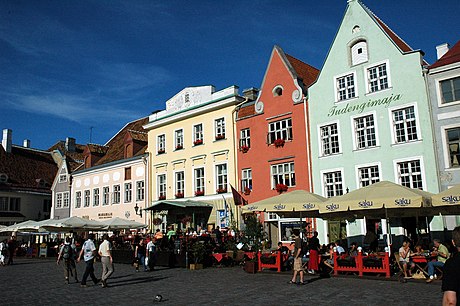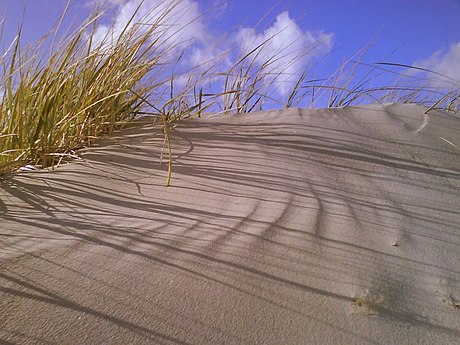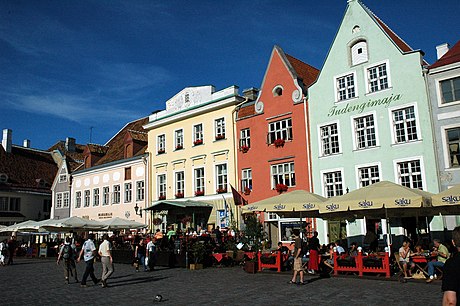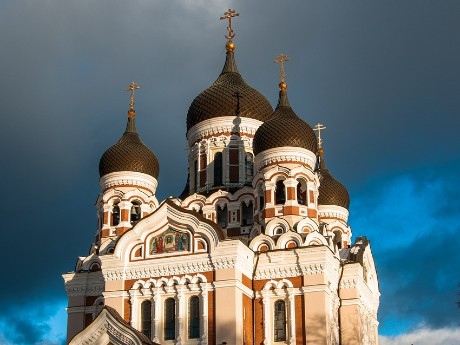Estonia: Tallinn & Pärnu
Set off on your adventure to the unique country of Estonia, seated on the Black Sea. The trip begins in the capital Tallinn, the country's top destination. The orthodox Alexander Nevsky Cathedral impresses with its Russian revival style of the late 1800s. To add, Tallinn Old Town, located in the city centre, is over 700 years old, the oldest in North Europe, and Viru Gate located nearby remains one of the city's most picturesque landmarks.
Read more
Set off on your adventure to the unique country of Estonia, seated on the Black Sea. The trip begins in the capital Tallinn, the country's top destination. The orthodox Alexander Nevsky Cathedral impresses with its Russian revival style of the late 1800s. To add, Tallinn Old Town, located in the city centre, is over 700 years old, the oldest in North Europe, and Viru Gate located nearby remains one of the city's most picturesque landmarks. Lennusadam (the maritime museum) and the Kadriorg Art Museum also offer visitors insight into the city's past while Kadriorg Park features stunning symmetrical designs leading to the Kadriorg Palace. The trip continues to Pärnu, known for its 19th century timber villas and for sandy Pärnu beach. Visit Pärnu Rannapark or the Parnu Museum which displays the 11,000 year history of the city in exciting exhibits. Waterviews strives to offer accommodation options within walking distance of water and/or in an area of touristic interest. Our prices include taxes (but excludes local tourist taxes). Customize your trip to your personal preferences with optional activities (hit the “Add Activities’’) or change hotels, etc. Contact us for customization at no extra cost at: Service@waterviewstravel.com
Destinations
- Tallinn
- Pärnu
- Tallinn
Itinerary
Tallinn

Tallinn is Estonia's capital and largest city. On the shore of the Gulf of Finland, it is a city of over 400,000 inhabitants. It is home to a third of the country's population, and is also the capital of Harju County in Northern Estonia.
Read more
Tallinn is Estonia's capital and largest city. On the shore of the Gulf of Finland, it is a city of over 400,000 inhabitants. It is home to a third of the country's population, and is also the capital of Harju County in Northern Estonia.
Additional Information
Tallinn has been and continues to be an important port of the Baltic Sea, with the busy passenger section of the port reaching the foothill of the picturesque medieval Old Town, which has been astonishingly well preserved and was inscribed on the UNESCO World Heritage List in 1997. In a striking contrast, the immediate outskirts thereof are filled with a cluster of modern office towers, with intermittent architectural monuments to the Soviet era. Further out, you will find a bewildering variety of historic and modern neighbourhoods, religious, civic, industrial and maritime heritage. This all provides for the city seeing very sizeable tourist traffic given its size, which in turn means the infrastructure is robust and extensive.
History
Tallinn is a historic city dating back to medieval times. The first fortress on Toompea was built around 1050 and Tallinn was possibly first recorded on a world map in 1154. In 1219, the city was conquered by Valdemar II of Denmark and it became a member of the Hanseatic League in 1285. The city, known as Reval at the time, prospered as a trading town in the 14th century, and much of Tallinn's historic centre was built at this time.
Tallinn then became a pawn in the geopolitical games of its big neighbours, passing into Swedish hands in 1561 and then to the Russian Empire under Peter the Great in 1710. By World War I and the ensuing brief Estonian independence (starting 1918) Tallinn's population had reached 150,000.
Estonia was occupied by the Soviet Union in 1940, conquered by Nazi Germany (1941–44), and then retaken by the Soviets. In World War II, the city was quite extensively bombed by the Soviets, although luckily the medieval town remains. The Soviet Union undertook a program of massive East Slavic migration, and just over 40% of Tallinn's current inhabitants are Slavic (compared to an average of 28% for the entire country). On 20 August 1991, Estonia declared independence and Tallinn became its capital once again.
Present day
Today Tallinn is a bustling, gleaming city of more than 400,000 inhabitants. However, among the tall glassy buildings and corporate headquarters, Tallinn retains an inner charm seldom found elsewhere. Estonia considers itself a Northern European/Nordic country, with very close ethnic, linguistic and cultural ties to Finland and cultural ties to Scandinavia, and visiting Tallinn you will find a mix of at least three architectures in this very visual city—old Europe (the city walls with rustic buildings and charming living areas with well-preserved and colourful wooden houses of bourgeois taste of 1920s), Soviet brutalist (concrete apartment blocks), and modern Europe (including McDonald's next to the city walls!)
Tourism is important for Tallinn and this is especially visible in the old town where almost every door leads into a souvenir shop, restaurant or bar. Unsurprisingly the majority of visitors are day trippers from Finland. The neighbours from across the bay usually know their way around without a map and have already seen the sights of Tallinn a couple of times. They come to enjoy low prices on practically all goods and services from restaurant meals to fuel and even plastic surgeries, not to forget as much alcohol as the customs regulations allow you to bring into Finland!
Districts
Tallinn is made up of 8 administrative districts (linnaosa), which are further divided into numerous quarters (asum). Most of the points of interest to tourists are located in the seaside districts. The districts of Tallinn are: Kesklinn - literally meaning "city centre" and being just what the label says, this district includes the main part of the Port of Tallinn, the Old Town (Vanalinn), Tallinn's central business district with its skyscrapers and many other tourist attractions in the quarters surrounding them, including the Kadriorg park and palace and most of the coastline of Lake Ülemiste except for the part immediately adjacent to the airport Haabersti - the westernmost district with the extensive coastline holds the Estonian Open Air Museum, the Tallinn Zoo and the Saku Suurhall Arena, as well as the city's largest shopping centre Põhja-Tallinn - literally meaning "north Tallinn", extends north of the railway line and includes the industrial part of the Port of Tallinn, as well as many monuments to its military heritage, the Maritime Academy and the quarter of Kalamaja known for its wooden houses Pirita - the least populous district of Tallinn stretches along the eastern part of its coast and includes both a popular beach and a forest. This is one of Estonia's most desirable places to live, in single-family houses, for the affluent, and home to some tourist attractions as well, including Tallinn's TV Tower or the Botanic Gardens Lasnamäe - the most populous district of Tallinn holds over a quarter of its inhabitants in the large Communist-era blocks of flats, but apart from the airport it has little of interest to the tourists Nõmme - formerly an independent town founded as a leisure/summer residence, Nõmme remains green and sparsely inhabited, with rich architectural heritage and many private villas. It ranks as one of the country's most affluent areas. Kristiine and Mustamäe are residential districts southwest of the centre.
Climate
At these latitudes winters are dark and cold and temperatures under -20°C are not unheard of from December to February. Thankfully, the sea moderates the winter temperatures a bit compared to continental cities with similar temperatures like Moscow.
Spring is the driest season and while there are often sub-zero temperatures at night until well into May, the snow usually disappears towards the end of March and the days are getting gradually warmer. Summer months are pleasant with day temperatures between +20°C and +30°C in July and August, however if it's raining, temperatures are lower. The summer is the best time of the year to visit Tallinn. Although Tallinn doesn't experience the Midnight Sun, in the middle of the summer it doesn't get really dark at night.
Usually you will need your jacket again towards the latter half of September. The autumn is the "rain season" and with both temperatures and the leaves falling, Tallinn doesn't look very attractive this time of the year. However the greyness is covered up by the snow that usually arrives in early December. Visiting Tallinn in December when the Old Town is beautifully covered in snow and Christmas decorations is not a bad idea.
Tourist office
© Sourced from Wikivoyage
Pärnu

Pärnu is a resort seaside city (and Estonia's summer capital) with a small harbour in south-western Estonia.
Read more
Pärnu is a resort seaside city (and Estonia's summer capital) with a small harbour in south-western Estonia.
Additional Information
The city is known for its spas, shallow white sandy beach and beautiful parks. It is also a popular place for conferences, theatre performances and concerts. In 1838 the first spa was opened and nowadays Pärnu is a health resort of international stature.
During the Great Northern War, the University of Tartu was relocated to Pärnu from 1699-1710. Tartu University still has a branch campus there today.
Since 1996 Pärnu has been known as Estonia's Summer Capital. Beach life, dozens of festivals, night clubs, big party crowds, concerts and funfairs - Pärnu has it all.
Pärnu is an ancient Hanseatic town where a medieval festival and an arts and crafts fair are held every summer.
© Sourced from Wikivoyage
Tallinn

Tallinn is Estonia's capital and largest city. On the shore of the Gulf of Finland, it is a city of over 400,000 inhabitants. It is home to a third of the country's population, and is also the capital of Harju County in Northern Estonia.
Read more
Tallinn is Estonia's capital and largest city. On the shore of the Gulf of Finland, it is a city of over 400,000 inhabitants. It is home to a third of the country's population, and is also the capital of Harju County in Northern Estonia.
Additional Information
Tallinn has been and continues to be an important port of the Baltic Sea, with the busy passenger section of the port reaching the foothill of the picturesque medieval Old Town, which has been astonishingly well preserved and was inscribed on the UNESCO World Heritage List in 1997. In a striking contrast, the immediate outskirts thereof are filled with a cluster of modern office towers, with intermittent architectural monuments to the Soviet era. Further out, you will find a bewildering variety of historic and modern neighbourhoods, religious, civic, industrial and maritime heritage. This all provides for the city seeing very sizeable tourist traffic given its size, which in turn means the infrastructure is robust and extensive.
History
Tallinn is a historic city dating back to medieval times. The first fortress on Toompea was built around 1050 and Tallinn was possibly first recorded on a world map in 1154. In 1219, the city was conquered by Valdemar II of Denmark and it became a member of the Hanseatic League in 1285. The city, known as Reval at the time, prospered as a trading town in the 14th century, and much of Tallinn's historic centre was built at this time.
Tallinn then became a pawn in the geopolitical games of its big neighbours, passing into Swedish hands in 1561 and then to the Russian Empire under Peter the Great in 1710. By World War I and the ensuing brief Estonian independence (starting 1918) Tallinn's population had reached 150,000.
Estonia was occupied by the Soviet Union in 1940, conquered by Nazi Germany (1941–44), and then retaken by the Soviets. In World War II, the city was quite extensively bombed by the Soviets, although luckily the medieval town remains. The Soviet Union undertook a program of massive East Slavic migration, and just over 40% of Tallinn's current inhabitants are Slavic (compared to an average of 28% for the entire country). On 20 August 1991, Estonia declared independence and Tallinn became its capital once again.
Present day
Today Tallinn is a bustling, gleaming city of more than 400,000 inhabitants. However, among the tall glassy buildings and corporate headquarters, Tallinn retains an inner charm seldom found elsewhere. Estonia considers itself a Northern European/Nordic country, with very close ethnic, linguistic and cultural ties to Finland and cultural ties to Scandinavia, and visiting Tallinn you will find a mix of at least three architectures in this very visual city—old Europe (the city walls with rustic buildings and charming living areas with well-preserved and colourful wooden houses of bourgeois taste of 1920s), Soviet brutalist (concrete apartment blocks), and modern Europe (including McDonald's next to the city walls!)
Tourism is important for Tallinn and this is especially visible in the old town where almost every door leads into a souvenir shop, restaurant or bar. Unsurprisingly the majority of visitors are day trippers from Finland. The neighbours from across the bay usually know their way around without a map and have already seen the sights of Tallinn a couple of times. They come to enjoy low prices on practically all goods and services from restaurant meals to fuel and even plastic surgeries, not to forget as much alcohol as the customs regulations allow you to bring into Finland!
Districts
Tallinn is made up of 8 administrative districts (linnaosa), which are further divided into numerous quarters (asum). Most of the points of interest to tourists are located in the seaside districts. The districts of Tallinn are: Kesklinn - literally meaning "city centre" and being just what the label says, this district includes the main part of the Port of Tallinn, the Old Town (Vanalinn), Tallinn's central business district with its skyscrapers and many other tourist attractions in the quarters surrounding them, including the Kadriorg park and palace and most of the coastline of Lake Ülemiste except for the part immediately adjacent to the airport Haabersti - the westernmost district with the extensive coastline holds the Estonian Open Air Museum, the Tallinn Zoo and the Saku Suurhall Arena, as well as the city's largest shopping centre Põhja-Tallinn - literally meaning "north Tallinn", extends north of the railway line and includes the industrial part of the Port of Tallinn, as well as many monuments to its military heritage, the Maritime Academy and the quarter of Kalamaja known for its wooden houses Pirita - the least populous district of Tallinn stretches along the eastern part of its coast and includes both a popular beach and a forest. This is one of Estonia's most desirable places to live, in single-family houses, for the affluent, and home to some tourist attractions as well, including Tallinn's TV Tower or the Botanic Gardens Lasnamäe - the most populous district of Tallinn holds over a quarter of its inhabitants in the large Communist-era blocks of flats, but apart from the airport it has little of interest to the tourists Nõmme - formerly an independent town founded as a leisure/summer residence, Nõmme remains green and sparsely inhabited, with rich architectural heritage and many private villas. It ranks as one of the country's most affluent areas. Kristiine and Mustamäe are residential districts southwest of the centre.
Climate
At these latitudes winters are dark and cold and temperatures under -20°C are not unheard of from December to February. Thankfully, the sea moderates the winter temperatures a bit compared to continental cities with similar temperatures like Moscow.
Spring is the driest season and while there are often sub-zero temperatures at night until well into May, the snow usually disappears towards the end of March and the days are getting gradually warmer. Summer months are pleasant with day temperatures between +20°C and +30°C in July and August, however if it's raining, temperatures are lower. The summer is the best time of the year to visit Tallinn. Although Tallinn doesn't experience the Midnight Sun, in the middle of the summer it doesn't get really dark at night.
Usually you will need your jacket again towards the latter half of September. The autumn is the "rain season" and with both temperatures and the leaves falling, Tallinn doesn't look very attractive this time of the year. However the greyness is covered up by the snow that usually arrives in early December. Visiting Tallinn in December when the Old Town is beautifully covered in snow and Christmas decorations is not a bad idea.
Tourist office
© Sourced from Wikivoyage





